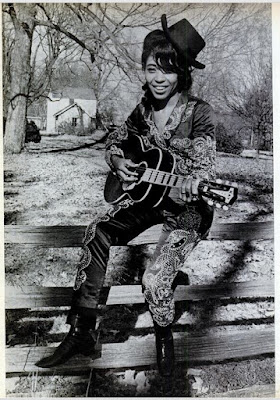Have you ever been "on tenterhooks" about something? Or did you think the expression was "tenderhooks," whatever they are? Actually, the correct word is tenterhooks, so what are they?
Tenterhooks are crooked nails driven into a tenter. A tenter is a wooden frame used as far back as the 14th century to stretch wet woolen cloth for drying without shrinkage. The tenter hooks hold the cloth. Often, fields or meadows would be covered with many tenters, each stretching cloth. In the UK, the word tenter can still be found in some street names and other place names, indicating that area's woolen past.
In the early 17th century, writers started using the phrase "on tenterhooks" or "on the tenters" as a metaphor for being in a state of tension or anxiety, referencing the taut state of the cloth hanging between hooks.
According to Merriam-Webster, "The word shares its origin with that of our word tent—the Latin tenta, the feminine past participle of the verb tendere, meaning 'to stretch.' A tent, of course, consists of a fabric stretched over poles and sometimes pinned to the ground." The misuse of the phrase "tender hooks" instead of tenterhooks is a common error.
Crumpets vs English muffins
I think most non-Brits have wondered at least once what a crumpet is and how it differs from an English muffin. Well, here are answers.
Crumpets and English Muffins are both cooked on a griddle or stove top. They’re about the same size and have craters or holes. The differences are that crumpets are always made with milk (you won’t find any milk in English muffin recipes) and are only griddled on one side, leaving one side toasted and the other soft—think sort of like a pancake's texture, only a little more spongy. Crumpet recipes don’t require yeast, and they have a looser batter. They’re also served whole, while English muffins are split. As for English muffins, they have a breadier texture and are toasted on both sides.
Crumpets are thought to have been developed in Wales in the 17th century and became common because they are cooked on a griddle, often more accessible than ovens. However, some sources trace similar foods to Scots or Anglo-Saxons. The first use of the word muffin appears in 1703, and recipes for muffins (flat breads that we know as English muffins) first appeared in cookbooks in the mid 1700s. In the late 1700s and first half of the 1800s, "muffin-men" would ring bells in the streets and sell door to door, muffins for a half-penny each and crumpets for a penny.
Bolo Knife
During the Filipino revolution against Spanish and then American colonizers in the late 1800s and early 1900s, revolutionaries had few firearms. The most common weapon wielded by Filipino guerillas was the bolo knife, and the fighters were known as "bolomen." Bolo is in fact a general term for the large knives used in the Philippines both as a tool and as a weapon, similar to a machete. However, there was a huge variety of bolos in the Philippines that differed in size and shape from island to island. They are characterized by a curved (usually convex) wide blade that narrows towards the hilt, with pointed or blunt tips, ranging from large knives to short swords to specialized agricultural equipment. They had a wide range of use, from hunting to scything grass, opening coconuts, harvesting crops, or clearing dense brush.
Mellified Man
Stories abound of strange ingredients being used in medicine around the world, and some of those ingredients have historically been human based. For centuries, Christian churches throughout Europe have touted healing powers of their relics, sometimes allegedly preserved body parts of saints. From the Middle Ages into the 1800s, Egyptian mummies were ground to dust and sold as medicines. However, one of the strangest such stories might be the legend of mellified men.
There is no historical evidence for their existence, and only second-, third-, and hundredth- hand references are found in Chinese texts dating back to the 1300s or so. The story is that sometimes a dying Arabian man would offer to sacrifice himself for the good others. He would stop eating everything but honey and bathe in honey until his death. When he died, his body would be submerged in a honey-filled stone coffin. After 100 years, the casket would be opened revealing a miraculous concoction which would be used, in the smallest doses, to treat and cure multiple wounds and illnesses.
Most likely the story arises from a combination of legends and bits of real practice around the world. Herodotus reported in the 4th century BC that the Assyrians had used honey in embalming, as did the Egyptians. Alexander the Great's corpse was said to have been preserved in a honey-filled sarcophagus. There was also a longstanding tradition in Burma of using honey to preserve corpses of revered Buddhist monks. While bits of mellified men were likely sold on some streets and in some apothecaries as cure-alls, their actual origin is cloudy at best.
The Mechanical Turk
Five years before the battle of Waterloo, Napoleon Bonaparte suffered another defeat when he lost a chess match to an automaton, a machine built to play chess, called the Mechanical Turk. The device had also defeated Benjamin Franklin and a swath of other opponents during numerous tours of Europe. The Turk was invented in 1770 by Wolfgang von Kempelen, and presented to Empress Maria Theresa of Austria. It was housed at Schonbrunn Palace for many years when not on tour. For nearly 84 years, The Turk bested most of its opponents in Europe and America. The machine consisted of a cabinet and a life-sized head and torso dressed in Ottoman style robes and a turban, billed as an "oriental sorcerer." Inside the cabinet, there were numerous gears and cogs resembling clockwork.
The Mechanical Turk drew lots of attention during its run, and stimulated lots of speculation about how the machine actually worked. Some even charged that there was a human inside the contraption making the moves, but nobody could actually prove any fraud during the machine's run. In 1854, the machine was destroyed in a fire that swept through its museum home. Shortly after the fire, a son of the device's owner published a series of articles confirming that it was all a hoax. In fact, a series of chess masters had secreted themselves within the cabinet over the years and had made the moves. (Human players did not sit at the same table as The Turk; they sat at a separate table and chess board, and an official would go back and forth and actually move the pieces.)
American National Exhibition (Moscow 1959)
In 1959, the Cold War between the US and USSR was in full swing, and the two countries engaged in a remarkable cultural exchange. Each country set up a showcase in the other country to display its technological marvels to the citizens of its rival superpower. The Soviet exhibition was in new York City, and the American exhibition ran from July through September in Moscow. Three million Soviets toured over six weeks and marveled at American art, fashion, cars, music, and futuristic kitchens before sampling their very first Pepsi, as American guides modeled, demonstrated, and answered questions about the latest and greatest consumer goods made possible by American capitalism. The guides were all chosen because they were attractive, under 35, and fluent Russian speakers. Overall, about 450 American corporations contributed to the exhibition, including Sears, IBM, General Mills, Kodak, Whirlpool, Macy's, Pepsi, General Motors, RCA, and Dixie Cup. Coca-Cola declined to participate, and Pepsi seized the opportunity to crack the new market.
Communist Party officials trained operatives to infiltrate the tour groups and attempt to disarm the guides by challenging them with politically charged questions designed to throw them off balance, specifically asking about race relations and wealth inequality in the US.
Historically, the exhibition is significant because of the so-called "Kitchen Debate." Vice-President Richard Nixon and Communist Party Chairman Nikita Khrushchev toured the exhibit before it opened to the public. Nixon used the opportunity to show off his debating skills by attempting to demonstrate American superiority to Khrushchev.
Competitive Pedestrianism
In the 1870s and 1880s, the biggest spectator sport in America and the UK may have been walking. Huge crowds packed indoor arenas like the first Madison Square Garden in New York to watch the best walkers walk. Think of it as a six-day NASCAR race ... on feet. They usually walked for 6 days (no public amusements allowed on Sunday), some 600 miles, taking short naps on cots set up inside the track. For up to 21 hours a day, they were in motion. "But people didn't go just to watch the people walk. It was a real spectacle. There were brass bands playing songs; there were vendors selling pickled eggs and roasted chestnuts. It was a place to be seen. There were a lot of celebrities who attended the matches: James Blaine, the senator from Maine, was a fan. So was future president Chester Arthur. Tom Thumb attended many matches. And so people went to see celebrities and see the spectacle, not just to watch the people walk." (Author Matthew Algeo, https://www.npr.org/2014/04/03/297327865/in-the-1870s-and-80s-being-a-pedestrian-was-anything-but )
The sport's popularity began to wane due to growing gambling, race-fixing, and "performance-enhancing drug" (chewing coca leaves) scandals and the rise in popularity of bicycle racing. Race walking is still an Olympic sport today.

.png)
.jpg)




.jpg)







.jpg)




.png)













.png)
